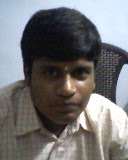Acupuncture is a treatment based on Traditional Chinese Medicine (TCM), a system of healing that dates back thousands of years. At the core of TCM is the notion that a type of life force, or energy, known as qi (pronounced "chee") flows through energy pathways in the body called "meridians." Each meridian connects to one specific organ, or group of organs, that governs particular bodily functions. Qi maintains the dynamic balance of yin and yang, the complementary opposites that are reflected in all beings and throughout nature. When too little or too much qi exists in a meridian or when the qi stagnates or is blocked, illness results. By applying needles to certain points along the meridian lines, acupuncture restores equilibrium and health by correcting the flow of qi. Acupuncture points, or the specific locations where needles are inserted, are places where the energy pathway is close to the surface of the skin.
Acupuncture was formally recognized as part of mainstream medicine's range of healing options in 1997, when the National Institutes of Health issued a statement documenting its safety and efficacy for a range of health conditions.
There are two major approaches that may guide acupuncture practice: the eight principles (used particularly in TCM acupuncture), and the five-element theory. The eight principles are in fact four sets of complementary opposites:
yin/yang,
internal/external,
excess/deficiency,
and hot/cold
While there are over 70 identified meridians in the body, acupuncture treatment generally focuses on points that lie along the 12 principal meridians and 2 "extraordinary" ones. A practitioner may also needle "extra" points identified as a result of clinical experience or "ah shi" points that are identified by their tenderness to the touch. The 12 principal meridians are Lung, Large Intestine, Stomach, Spleen, Heart, Small Intestine, Urinary Bladder, Kidney, Pericardium, Gallbladder, Liver, and Triple Warmer. Points are identified by the abbreviation of a meridian and a number to indicate the point. For example, SP6 refers to point 6 along the Spleen meridian, while GB20 refers to point 20 on the Gall Bladder meridian. It is important to remember that the names of these meridians do not refer to the same meanings one might attach, for example, to gall bladder or liver in conventional Western medicine.


No comments:
Post a Comment